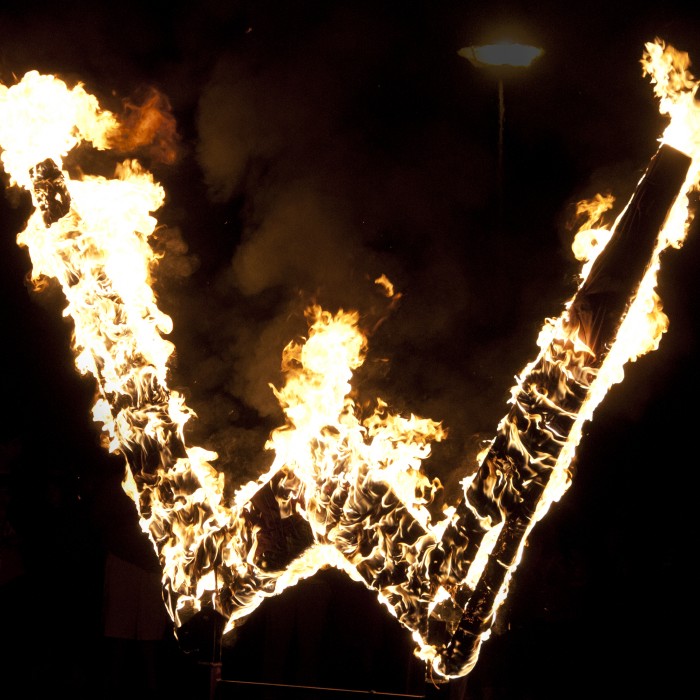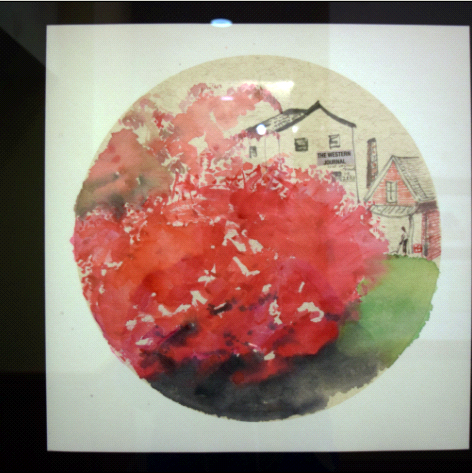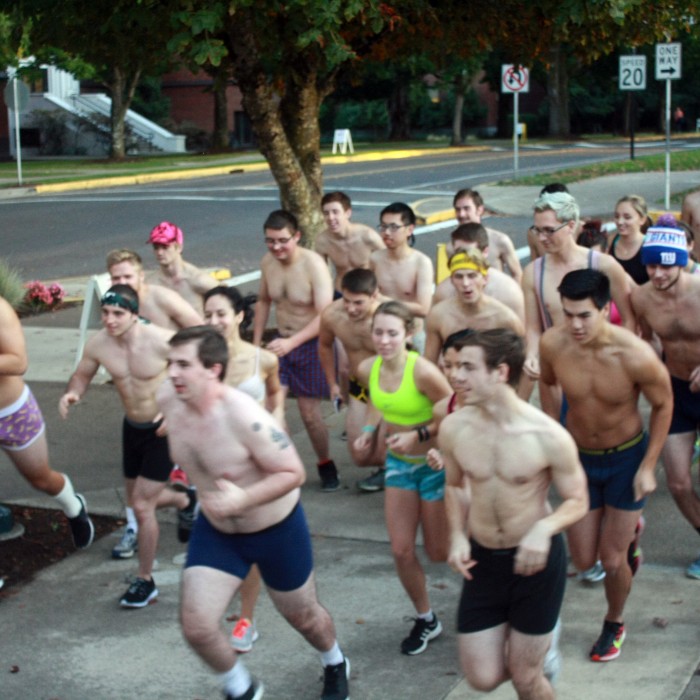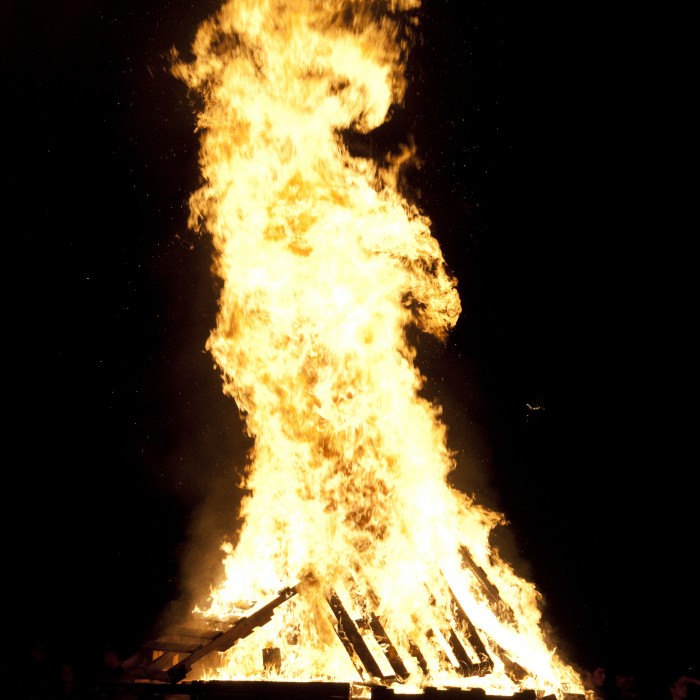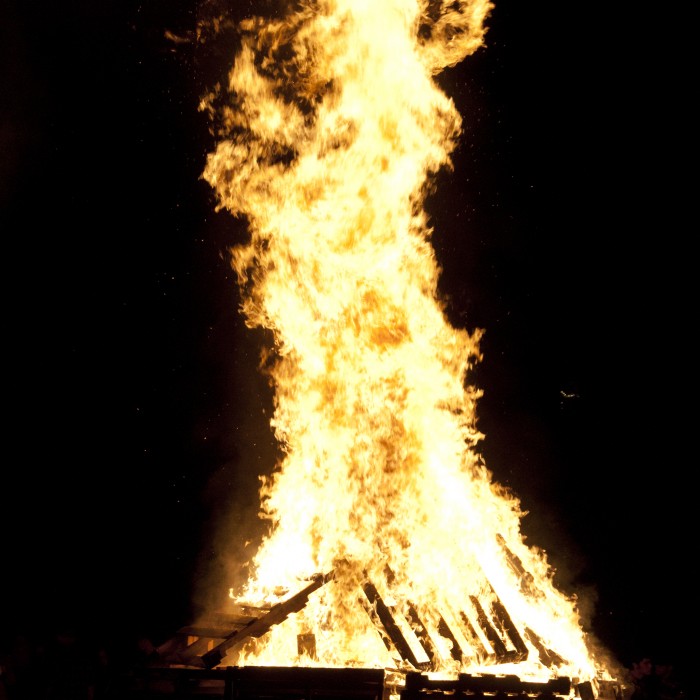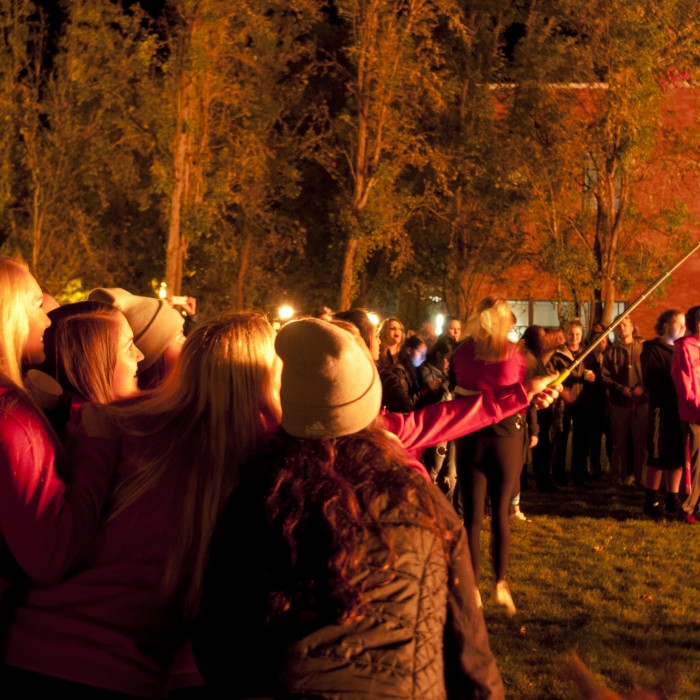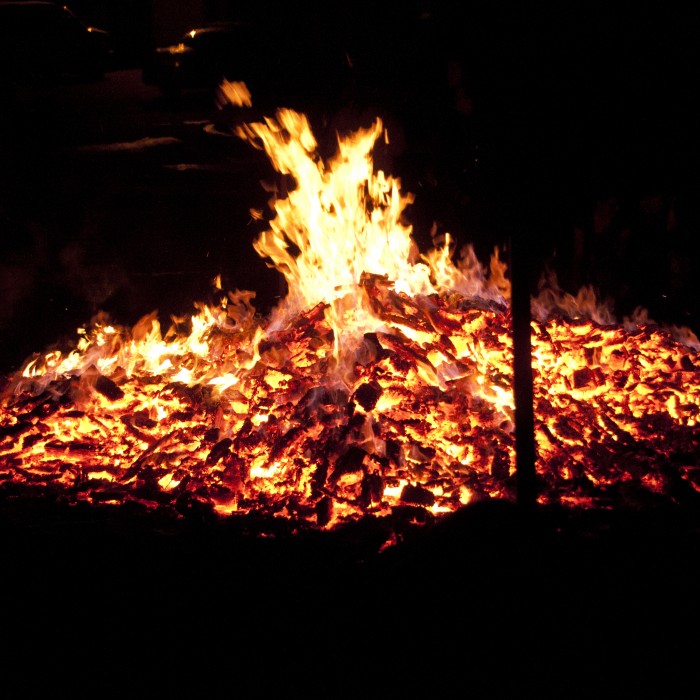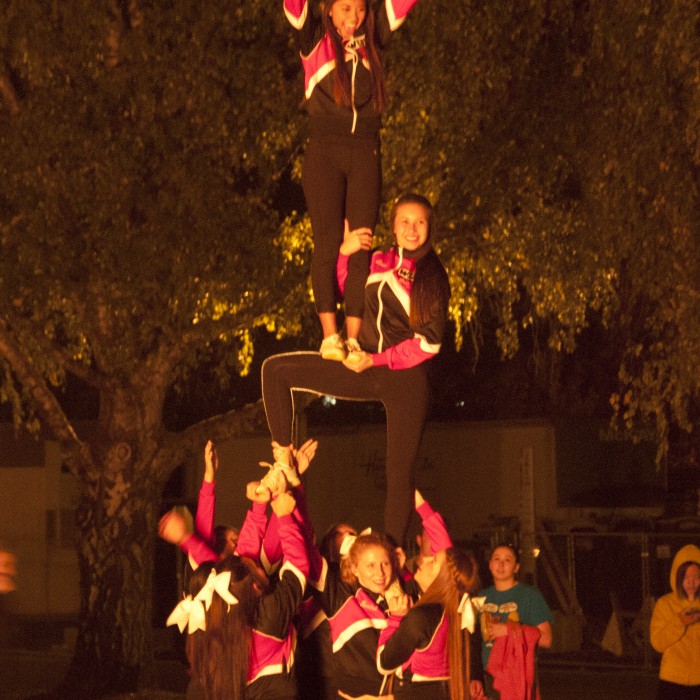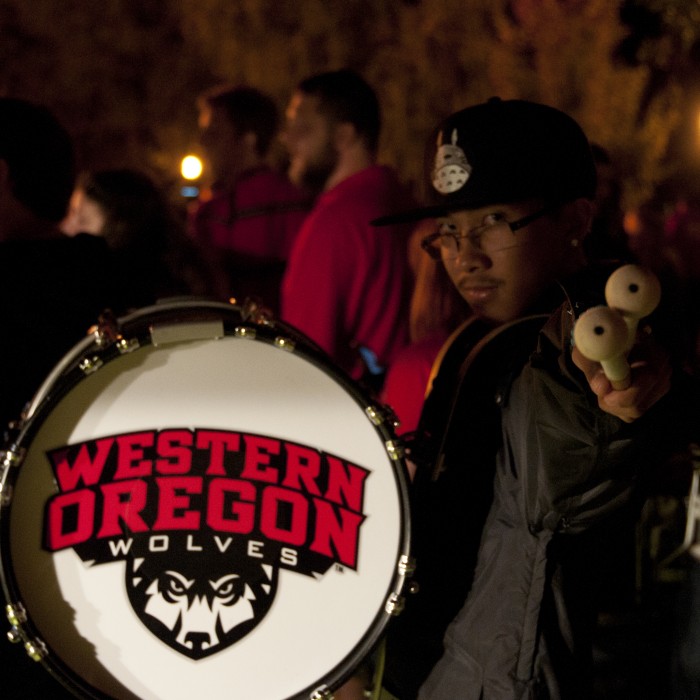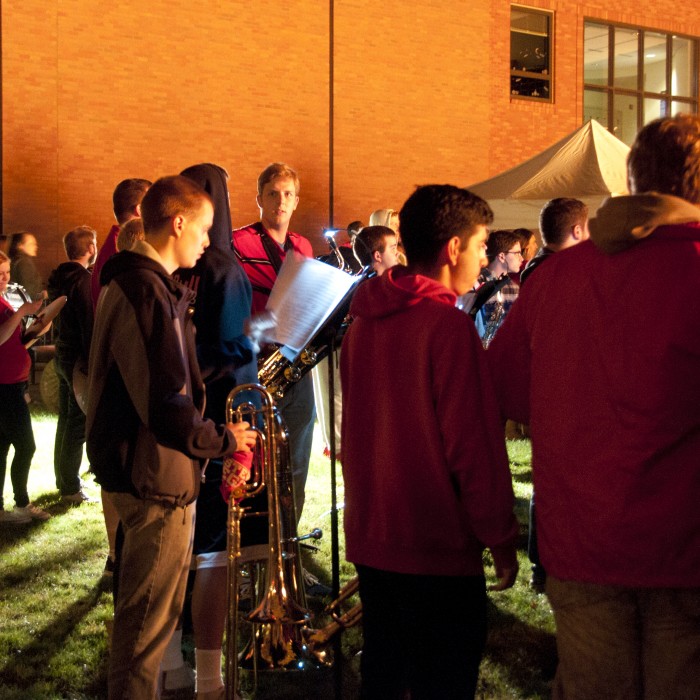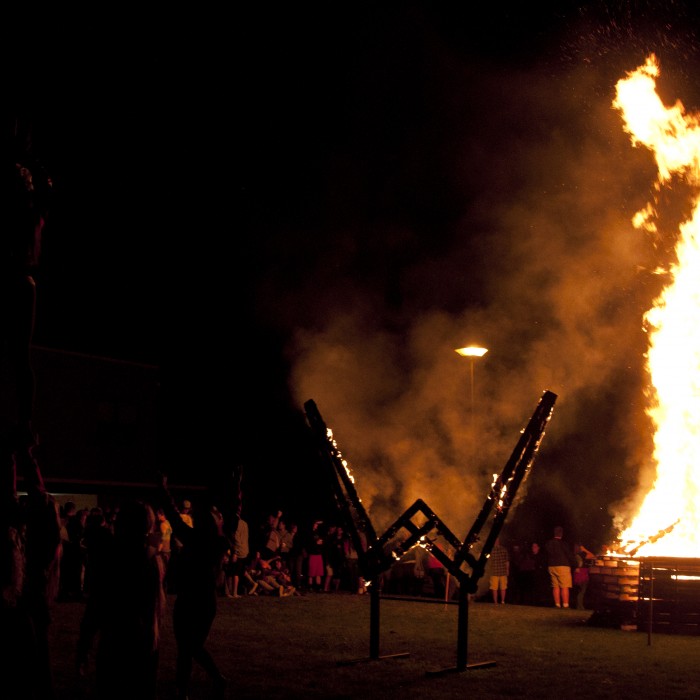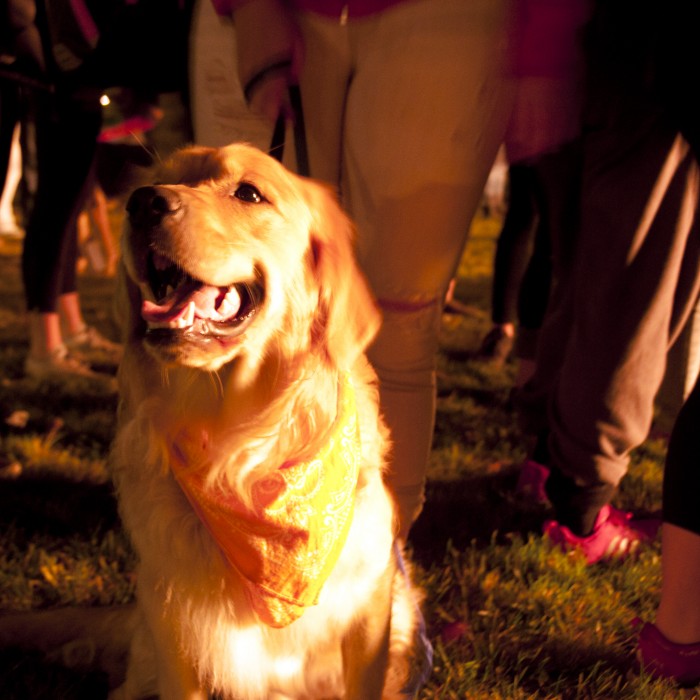By: Declan Hertel Entertainment Editor
I sat down with WOU Student and musician Adam Carter over a pint this weekend to talk about his upcoming documentary project.
Declan: So what is this documentary all about?
Adam: Me and my friend JT [Mozingo], we’re going to go around the country, trying to find amateur musicians, and professional musicians, we’re going to do everything music. We’re going to go to recording studios, talk to teachers, talk to students, and we’re going to try to record intimate sessions with them, interviews, and live performances of songs. We want to give exposure to amateur artists, and we want to show everybody that there’s a lot of hardworking people out there that have a lot to offer, but aren’t going to get the exposure.
D: So the super underground?
A:Yeah, the super underground and the super popular. We want to do everything. Doesn’t matter who it is, we want everybody.
D: How did the idea come about?
A: I was walking home from school, and I was thinking about the road. Last summer, I went on a trip for a month last summer, we went all around the west coast. And I was thinking about life on the road, and how I missed it, because it’s different, you know? There’s no routine, something new every day. I was thinking about how I could do something like that for the rest of my life, or make some kind of career out of it, something like that. And I thought, “wouldn’t it be cool to make a documentary about a road trip?” But that’s really not enough, and I love music, and everybody around me loves music, making it, listening to it, so why not put the two together? Go on a road trip for a year, interviewing amateur artists from all over the place. It’s a travel documentary, people like traveling, people like music, there’s a market for it, and this is the kind of thing that doesn’t happen that much, people don’t really go around doing this. And what really inspired me: Alan Lomax, in the 30s and 40s, him and his dad would go around in the south and record a bunch of blues musicians, blues was their favorite I think, but they went all over the world, at least Alan did, and recorded music that wouldn’t have been documented if he didn’t do that. A lot of my favorite songs were recorded by him, and we wouldn’t have them if he didn’t go around and do that. So I think it’d be cool to discover some stuff that wouldn’t normally be out there, and turn people onto some new things.
D: I love that. The idea that there’s so much music that’s beautiful and worth listening to in the world, and I’m not going to hear even half of it…
A: Yeah! And even if I’m not a fan of it, other people will be. What we want to do is give exposure to every single person that records with us. We don’t want to take ownership of any songs or anything.
D: What’s the time frame for getting started in earnest?
A: We want to be on the road in spring of 2017. We have a lot of work to do though; we need to get experience with cameras and editing. We just got a couple cameras; we’re hoping to start shooting pretty soon. We’re going to start shooting locally before we branch out, so Portland, Salem, even Monmouth. Another thing we want to do is go around to bars in the Salem area, and if they have live music, interview the musicians there, the owner, the patrons, just to get some sort of a following first. I think just even locally there’s so many people working hard and making music, and they deserve some exposure.
D: Amen. Speaking of support, are there plans for a Patreon or something where people can support your efforts?
A: There’s not right now, but we’re going to do a Kickstarter when it’s closer to being time to go. We’re gonna be saving up ourselves, a lot. The main thing you can do to support us right now is share. Tell your friends.
D: If we know people, send them your way?
A: We would love to hear from everyone we possibly can. We want to answer questions, we want to give no misconceptions that we’re trying to screw anybody over. We’re in it for, I mean obviously it’s selfish in some ways, but we really do want to give exposure [to artists] and have an adventure while we do it.
We’ve got connections so far in a few different places around the country; we’ve heard from a lot of people in Indiana, we’ve been talking to a guy who lives in Georgia, [some people in] Arizona, Utah, New Mexico. We’ve got a lot of different prospects going on, and we want to get as many people [as we can], all around the country. So we want to advertise and make it available for people.
D: Do you know of any places that have a super vibrant indie scene? I know San Francisco’s got a crazy scene.
A: I’ve heard Austin, Texas has a lot, they’ve got some good stuff going on, San Francisco like you said. I don’t know about indie, but I know Chicago’s got a big urban blues scene, I believe that they are the blues capital currently. And I have family in Chicago, so that’ll be nice. What I’m looking forward to most is Mississippi, I love that Delta Blues.
D: Are there any other places you’re especially looking forward to?
A: The whole south I’m looking forward to, just because I’m such a huge blues fan. But I want to try to go to as many national parks as we can too, because I love national parks. Our country is very beautiful, and a lot of people don’t know just how insane some of the natural wonders are. We want to document those too, that’s part of the adventure. We visited seven of them last summer, it’s amazing. Yosemite National Park, if you’ve ever been there is just… I think we went to seven national parks and Yosemite was by far my favorite. Grand Canyon’s got nothing on it.
D: How do you think the acoustics are at the bottom of the canyon?
A: Echoey. Maybe we’ll do a session down there, ride the mules down.
D: Do you have any plans to shoot in cool locations like that, or mostly living rooms?
A: We want to be able to record outside, definitely. We also want to rig the video we have to have a little studio so we can record if we don’t have anywhere else. We’re also probably going to be renting a studio. One thing I’m really excited for is, apparently, JT knows a guy[…] who runs this bus in San Francisco, and it’s like a punk bus, there’s a stage in the back and there’s punk shows on the bus. They drive around San Francisco with a punk band playing in the back. That sounds really, really cool and I can’t wait check that out.
I’m really excited to shoot the WOU too. As many people as want to do this, I want to do it with them. Just shoot me an email, we’ll set up a time. I would love samples, I can’t get enough of them.
D: You’ve already got some people, yeah?
A: Yeah, we want to do a few practice sessions by ourselves [first], and then we want to start doing that. We’ve got access to microphones and editing equipment through the recording studio. We’re probably going to do our first session […] within the month, then make the Facebook page live. Our goal is to start putting out weekly videos, after we get a few videos, so I want to get three or four before we start. We want to keep people updated and keep them into it; we want to have content coming out at a consistent rate.
D: Do you have a route planned?
A: We’re going to go down south through California, the same route we took on our trip last year. We’re going to go all the way to the bottom, there’s this place called Slab City, you know where that is?
D: Yeah! That’s kinda like a… commune or something? Lawless?
A: Yeah, it’s a squatter’s community. We met some cool people there last time we went, we want to go back. They have concerts every Saturday night. There’s this place called the Range, it’s a bunch of buses put together with a stage. We met some people there, you know, we hung out with them for a few hours, but when we were leaving it felt like we were leaving our family a little bit. It was amazing. We want to go back and connect with them, and that’s going to be interesting to shoot. There are so many crazy people down there. Insane. Meth-heads, their pastor came while we were there to say a prayer over Mariah, the woman’s foot… fun fact, Mariah is, if you’ve seen the movie “Into the Wild”, the girl that Kristen Stewart plays is based on her. But anyway, he was this guy, he was really skinny, he had his shirt off, he looked like a miner. He had this huge beard and this hat, and he was the pastor! I’ve never seen a pastor like that. Everything down there is pretty crazy.
D: Then down through Arizona?
A: Through Arizona, through Texas, there are a couple places in Texas like Austin and Houston; Lightnin’ Hopkins is from Houston and I want to try to delve into that, see if there’s anything about him down there because he’s one of my favorite performers. And then make our way into the South, kind of zig zag through the Midwest, go up the East Coast, then head back through the North. I’m from Illinois originally, I have some family, southern Illinois and Chicago, so I hope to visit them. A guy that’s going to be one of our camera men, he’s from Indiana, so he’s got connection out there. We’re going to try to hit as many states as possible. And we have a year, that’s what we’re planning on doing it in.
D: This is super cool. I’m guilty of this, people talk about big plans, and like “I’m writing a novel!” or something like that, and you never do it. And to see a couple of dudes who said, “let’s do a thing,” and then are going to do the thing, it’s reassuring.
A: My whole life people have been telling me “follow your dreams,” right? And then whenever it’s time to do that, people say, “well, is that really realistic? Is that really going to work, you’re kind of going out on a limb here.” But my whole life people have been saying follow your dreams. So let’s do it! We would regret it if we didn’t, so we’re going to do it. That’s what it’s about, you know. Not having any regrets, looking back when I’m thirty and saying, “wow, I wish I had made that documentary, I wish that I had done that. That would have been a really great life experience but I can’t really do that anymore.” I have a kid or something, you know. I don’t have any kids! I’m 21 years old, I don’t have anything really tying me down. So we’re going to do some cool stuff. Try to travel as much as I can, see as much of the world as I can before I settle down.


